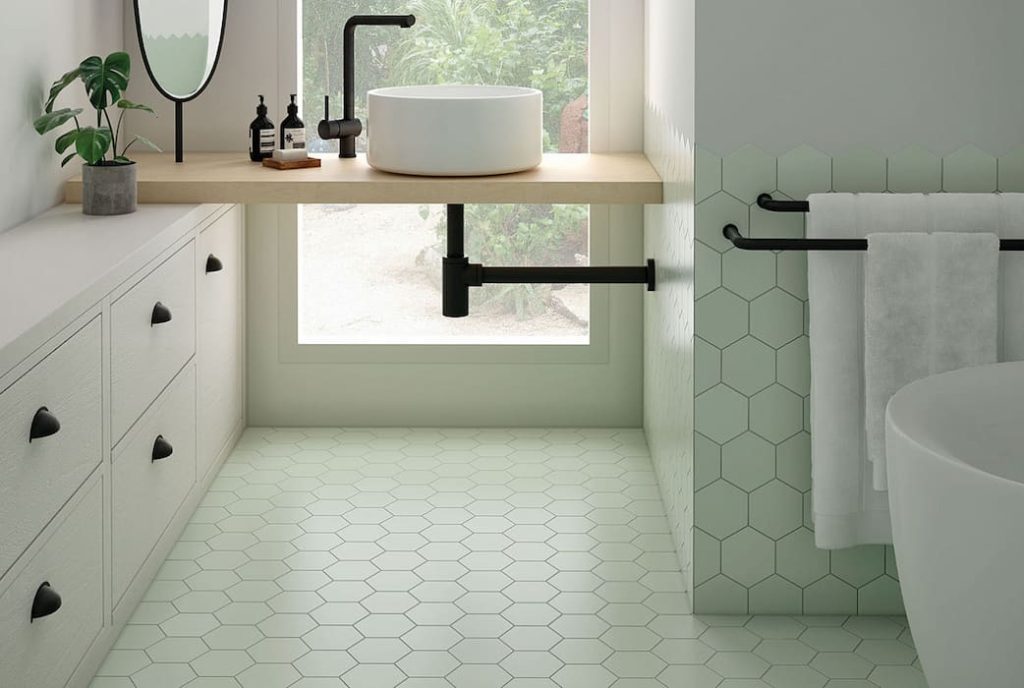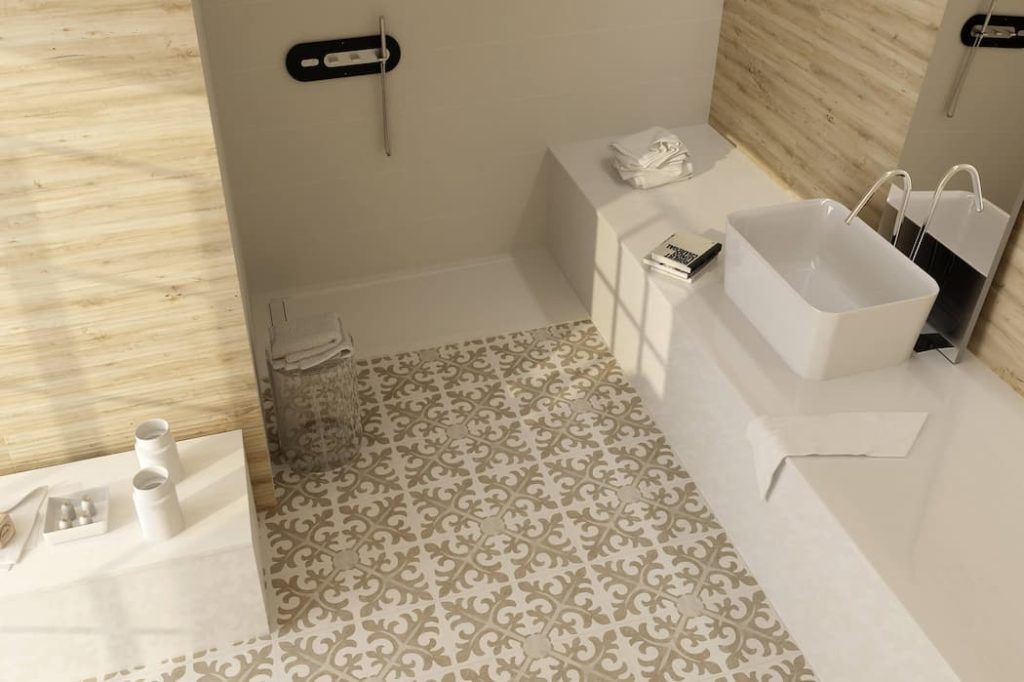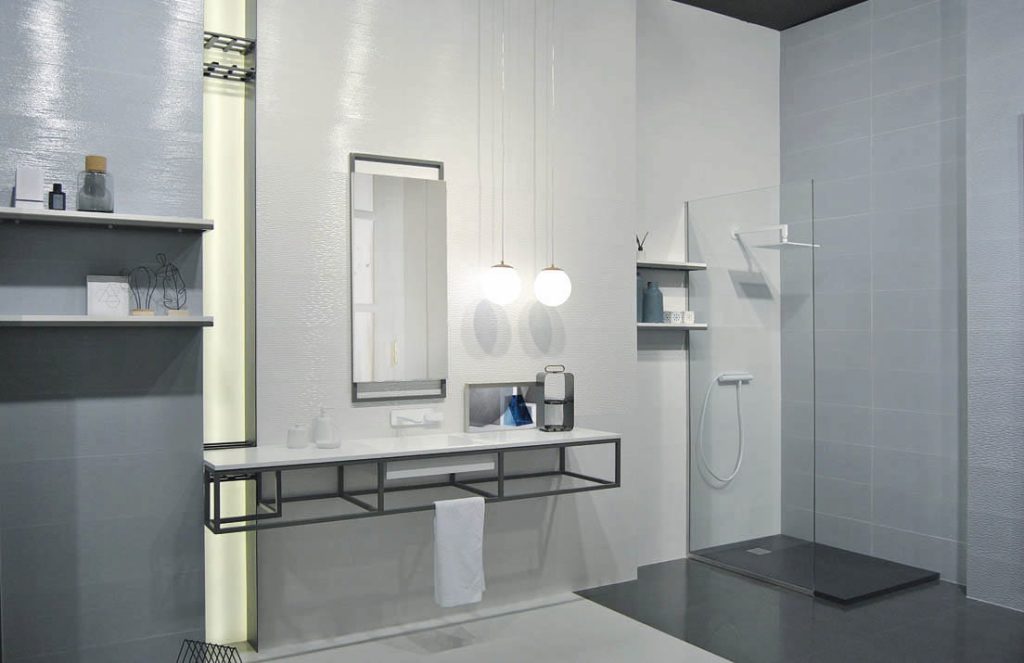Certain essential rules should be followed while selecting the best kitchen floor tiles in order to maximize the available space. They will also ensure that your kitchen appears aesthetically complete. Choosing to utilize larger kitchen floor tiles is always a wise decision.
Because this area receives a great deal of foot traffic, is prone to spills, and is covered in various types of filth and grease, larger kitchen tiles are unquestionably the more practical option. Consider the fact that dirt will be able to penetrate more cracks and crevices with smaller tiles.
Even while the upkeep may be more challenging, if you value aesthetics, you will make the effort to keep them looking well! Using tiles with a wood or marble appearance could make a space feel more open.
These designs may prevent your kitchen floor from appearing too cluttered because they are typically larger and have a plainer design. These types of tiles are also among the simplest to clean and can greatly enhance the aesthetic appeal of a kitchen.
If you’re looking for simple, attractive floor tiles, wood and marble impression tiles are ideal for your kitchen. For the more adventurous, though, there are patterned and mosaic tiles available.
Choosing patterned or mosaic tiles may transform a kitchen from dreary and impersonal to vibrant and inviting, but smaller tiles are more difficult to clean and maintain. They also provide wonderful opportunities for artistic expression!

Using your tiles to create zones is a creative approach that works well in surroundings with an open layout. You can provide contrast and structure to your kitchen’s open space by using both plain and patterned tiles in particular areas, such as around the dining room table.
When deciding on the appropriate style for your kitchen floor tiles, you should also consider the substance the tiles are made of. Obviously, you want your kitchen floor tiles to reflect your preferences, but you also want them to withstand the test of time.
Ceramic and porcelain are two of the most popular and durable kitchen tile materials. But what is the difference between the two, and which is ideal for a kitchen floor?
The Difference Between Ceramic and Porcelain Tiles
Despite the fact that both materials are reasonably durable, there are considerable differences between them. Porcelain is the densest tile material. They are hence more resilient and absorb less water.
As a result, porcelain tiles function exceptionally well in areas of the home exposed to dampness and heavy foot traffic, making them perfect for kitchens and bathrooms. If you are looking for a simple, functional, and eco-friendly kitchen floor, porcelain tiles may be the perfect solution. If you do basic maintenance, porcelain tiles on your kitchen floor can last up to 50 years before you need to consider replacing them.
Ceramic tiles are certainly less resilient than porcelain tiles, despite their reasonable durability. Because of the type of clay used to manufacture them, they are often less dense than their porcelain counterparts.
Due to their propensity to collect water over time, they are susceptible to cracking in severely cold winters. This indicates that they lose their luster a bit faster than porcelain tiles.
Depending on their quality, ceramic tiles have an average lifespan of between 3 and 20 years. However, the vast variety of colors, patterns, and designs offered by ceramic tiles is by far its greatest feature.
Although porcelain tiles are more durable than ceramic tiles, they cannot equal ceramic tiles’ stylistic diversity. Therefore, ceramic tiles may be your finest selection if you’re searching for tiles with intricate designs.

Current Tile Fashions
Obviously, if you are renovating your kitchen, you want it to have a fresh, modern style. Nevertheless, you don’t want to have to remodel your kitchen every few years to keep up with the latest style.
When picking the ideal tiles for your kitchen floor, it is vital to choose trendy patterns that will remain fashionable. In order for you to continue to enjoy them for many years. Not only are the following kitchen flooring trends fashionable, but they also appear to be here to stay.
Wood-look tiles
Unquestionably, wood impression tiles have grown in favor as the ability to imitate the look of wood flooring has increased. Typically, these are made of ceramic or vinyl. These tiles may aesthetically mimic a wooden floor, but they have none of the disadvantages.
If you like the idea of having wooden flooring but don’t want to pay a high price or struggle with creaky boards, wood impression tiles are a great solution.
Herringbone
Laying your tiles in a “herringbone” pattern is a design choice that complements the growing popularity of wood-look flooring. Essentially, this entails arranging your tiles in a diagonal v formation. This visual dream is utilized on both the floor and walls of kitchens.
Using tiles for small kitchens.
You shouldn’t have to forego a stylish kitchen simply because you have limited room. Kitchen tiles are an excellent way to create the illusion of a greater area in a tiny kitchen. One of the best methods to accomplish this is by installing your kitchen tiles diagonally rather than parallel to the wall. In terms of colors and patterns, simplicity is essential.
The employment of little tiles in intricate patterns might give the appearance that a space is more crowded or smaller than it actually is. As another helpful styling suggestion for a tiny space, use a basic tile and grout that is the same color as the tile. This successfully unites the kitchen flooring and creates a smoother flow in the kitchen.

Dimension of the tile
There are endless options for picking the size of your tiles, ranging from small penny rounds to subway tiles to 600x600mm floor tiles up to three-meter-long slab tiles. Tile thickness is a feature that is sometimes overlooked in regard to these incredibly diverse floor and wall coverings. Most porcelain tiles have a thickness between 6mm and 10mm, which is excellent for most purposes.
Wall tiles are typically 6 to 10 mm thick. They range from 6 to 10 mm in thickness to facilitate the blending of mosaics and decorative wall elements. Despite the fact that you may not detect tile thickness in the completed project, understanding the thickness of your tiles can be quite beneficial when planning a restoration, particularly for estimating the height of your floor.
Don’t forget to include the underlay, leveling compound, and adhesive bed when calculating the finished height. The thickness of wall and floor tiles varies based on the type of tile and its intended application. Consequently, the thickness of all similar and batch-derived tiles will be identical. There are major exceptions to the rule that all stone products are mined organically.
These are fragments of larger slabs, and their thickness may fluctuate naturally. Any professional tiler with expertise working with real stone products would be able to account for thickness variations while placing tiles.
Our assortment of porcelain tiles ranges in thickness from 6 millimeters for our large, thin slab tiles to 20 millimeters for our most durable porcelain tile pavers. Before laying your tiles, we recommend inquiring about their thickness with our trained staff. Before fastening the tiles in place, dry-laying them is a great technique to ensure that the thickness is uniform and that the tiles are level. Take your time and visit our website for the largest kitchen floor tiles collection.










Your comment submitted.